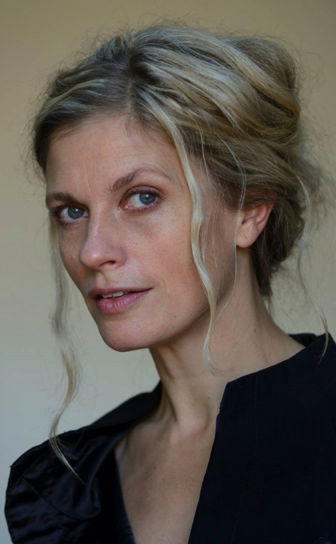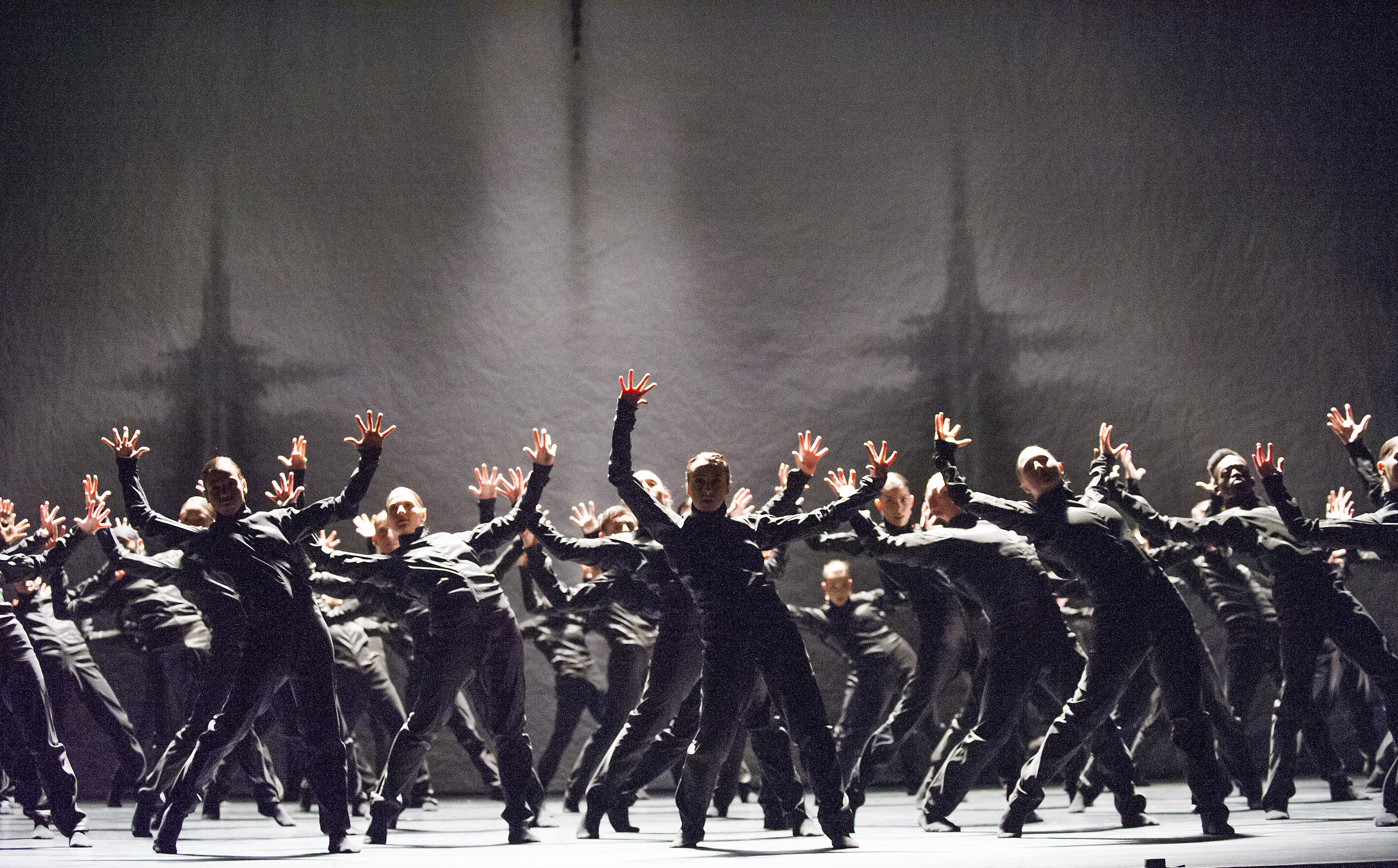
Crystal Pite, the internationally acclaimed Canadian choreographer, talks about the processes and emotions that come together in her extraordinary work.
Betroffenheit is Crystal Pite’s current favourite among the 40+ works she’s created over the past 25 years.
It is also the most harrowing.
The German word doesn’t translate easily into English, but as Pite explained, “in the context of our performance it means a kind of shock or trauma.”
Co-created with the Vancouver actor and playwright Jonathon Young, who wrote the piece and performs in it, Betroffenheit arose from a personal tragedy: the death in a fire of Young’s 14-year-old daughter in 2009.
Crystal Pite choreographed and directs the work. “I was anxious about getting it right and I was anxious about dealing with the content, but at the same time I was also very inspired and fascinated and curious about the question of suffering and survival.”
Though anchored on a devastating event, this collaboration with Jonathan Young brought her huge emotional fulfilment.
“I really followed his lead in terms of how he approached each day of the creation, how he was able to work with such an open heart and willingness; so, for me I think it was a surprisingly joyful, surprisingly beautiful process.”
Betroffenheit may be her current favourite – “I care very deeply about this work” – but Crystal Pite is quick to point out she feels very strongly about all her works:
“You have to feel invested in what you’re creating because otherwise it doesn’t gel.”

Now 45-years old, Crystal Pite doesn’t remember a time when she didn’t want to choreograph. Simply put, “I like to create things.”
Born in 1970 in British Columbia, Canada, she joined the Vancouver-based Ballet BC as an apprentice dancer at 17. Her first choreographed work was shown by the company two years later.
She left to join William Forsyth’s Ballet Frankfurt; and later became resident choreographer at Les Ballets Jazz de Montréal. As a dancer she performed the works of more than 30 choreographers and absorbed many influences:
“I think all of us are hybrids of all the people we’ve encountered from our very first teacher to the choreographers that we’ve worked with on a professional stage.”
However, it was not until she formed her own company, Kidd Pivot, in 2002 that she had the chance to dance her own choreography.
She feels that’s when she came into her own as a choreographer.
“I found there was a really good synergy that happened, there was a good connection between myself as a dancer and myself as a choreographer. I could deliver the best of myself and I knew very well my own limits and possibilities as a dancer.
“There was also more control because I found the choreographer in me wanted more out of the dancers, but ultimately I think I learned a lot about creating my own vocabulary and finding something that was distinct through my own dancing.”
“An image maker of rare distinction” in the words of a critic for The Australian, Crystal Pite has earned international acclaim and a raft of awards too numerous to list in full, most recently a British National Dance Award for best modern choreography for her work Polaris, shown at London’s Sadler’s Wells.
Featuring 64 dancers (she had originally asked Sadler’s for 100) Polaris illustrated her amazing ability to move large numbers on stage to overwhelming effect.

photo Tristam Kenton
Rigour and Recklessness
Pite’s work “makes you feel passion and unease under your skin,” wrote The Guardian; and to a large extent that’s the result of the powerful way in which she combines “rigour and recklessness:”
“For me there is something interesting in that kind of contrast (…) I always cultivate first of all a sense of rigour to reach the idea of the work, but at the same time keep openness and recklessness and feel that we are always on the edge. I think there’s something interesting and beautiful in that.”
There is a sharp intelligence at work in Pite’s use of any stage and theatrical devices that will help drive her narrative or flesh out her concept, from puppets to video projections and the spoken word.
Her latest work, The Statement, which has just premiered at Nederlands Dans Theater, is set in a boardroom and in it two pairs of dancers perform to a recorded audio script voiced by four actors. She explains:
“I think there are lots of kinds of different people that come to watch our performances and I like the idea that we offer different facets. Some will respond to the actual dancing, the choreography, and others will respond more to the text or to the visual statement, the environment. So I like to explore content and also offer content in different ways in our work.”
One of her most ambitious works is The Tempest Replica, a retelling of Shakespeare’s complex last play, created during Kidd Pivot’s temporary residency at Kunstlerhaus Mousonturm in Frankfurt, which started in 2010.
She’s produced work for a huge array of international companies, among them NDT, where she is now Associate Choreographer, Ballet Frankfurt, and the National Ballet of Canada to name but a few. Since 2013 she’s been an Associate Artist of Sadler’s Wells.
She likes to ground her work on the specifics of the commissioning company:
“I always try to work to the strengths and abilities of the people that I work with. I find that it doesn’t work any other way.”
Future projects include commissions from the Paris Opera Ballet and Britain’s Royal Ballet. In fact, Crystal Pite is so much in demand she’s having to turn down work, not least because she has a five-year-old son, Niko, with her partner, Kidd Pivot set designer Jay Gower Taylor.
Becoming a mother, she says, has fundamentally altered her outlook on life.
“It’s having an influence in the way that I approach everything, including my artistic work. Having a child makes me more aware, more passionate, more terrified, more vulnerable than I’ve ever been before.”
Ultimately this will, she’s sure, make her a better choreographer. We can only wait with bated breath for her next work. And the next.
Betroffenheit is at Sadler’s Wells on 31st May and 1st June.
E N D
